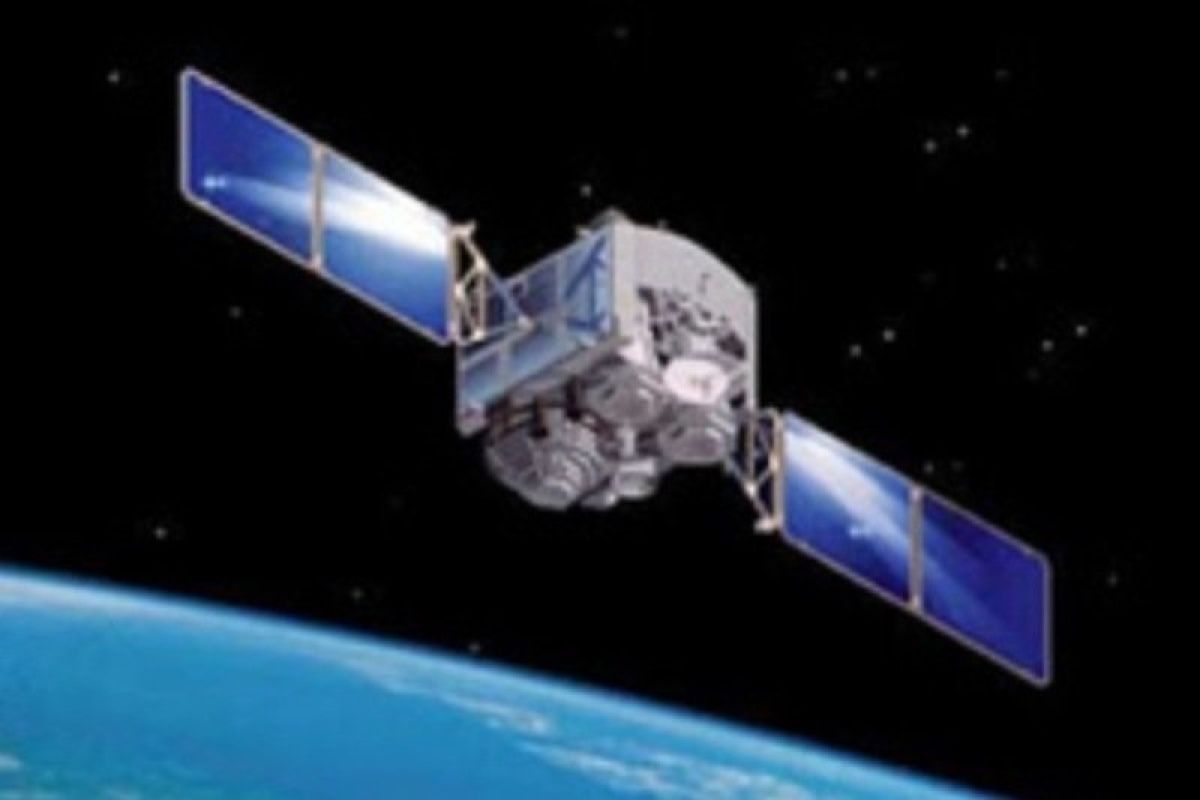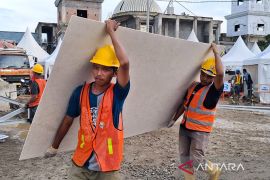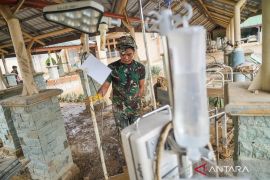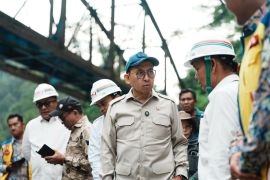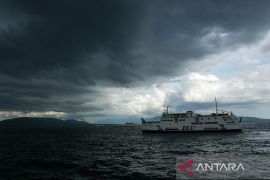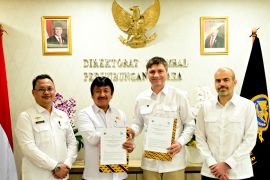Whether seen in person or on a virtual platform like Google Earth, the landscapes of Indonesia, stretching from seas, hills, and mountains, to lowlands, are diverse.
Thus, it is not surprising that Indonesia needs efforts to successfully connect every region to the Internet.
In the world of telecommunications, terms like backbone, middle mile, and last mile are often used to refer to the physical telecommunications infrastructure.
The backbone is the first connection that is needed to make telecommunications available. In Indonesia, the backbone network is based on fiber optic cables, stretching over land and under the sea.
Indonesia's backbone network, the Palapa Ring, interconnects fiber optic cables across the western, central, and eastern regions.
This backbone network needs to be connected to the last mile with the installation of base transceiver stations (BTS).
However, due to the diversity of Indonesia's landscape, not all areas can be reached by optical fiber cables. Therefore, Indonesia's most realistic option is to use satellites for middle-mile connectivity.
To fulfill its telecommunications needs, Indonesia currently uses nine satellites—five national satellites and four foreign satellites. The nine satellites have a total capacity of 50GBps.
Unfortunately, this capacity is not sufficient for meeting Indonesia's telecommunications requirements, which have been growing since the birth of the Internet. In this digital era, Indonesia needs at least 1TB of satellite capacity, the Ministry of Communication and Informatics has estimated.
SATRIA-1
The need for a satellite with a large capacity has led Indonesia to its most strategic choice: that of creating its own satellite. The satellite, SATRIA-1, is scheduled to be launched in mid-2023.
The multifunctional and high-throughput satellite has a capacity of 150GBps, or thrice the total capacity of the nine existing satellites.
SATRIA-1 has been designed for ensuring Internet connectivity. Given its capacity, it is estimated that it can provide Internet access to 150 thousand public service spots in Indonesia that have not been reached by the Internet.
At the moment, SATRIA-1 is still being assembled at the Thales Alenia Space in France. The satellite will measure 4.5 tons in weight and 6.5 meters in height. According to the latest data from the Telecommunications and Information Accessibility Agency (BAKTI), the SATRIA-1 is currently 68.3 percent complete.
While building SATRIA-1, Indonesia has prepared the Hot Backup Satellite, also with a capacity of 150GBps. In addition to being a backup for SATRIA-1, it will provide additional capacity.
Although the Hot Backup Satellite has been prepared only as a reserve, it is scheduled to be launched before SATRIA-1, in the first quarter of 2023. Both satellites are expected to be made operational by the end of 2023.
The origin of national satellites
SATRIA-1 is not the first satellite owned by Indonesia. The country with the largest territory in the ASEAN region launched its series of Palapa satellites quite a while ago.
According to an article released by BAKTI, the name "Palapa" makes a historical reference as it was inspired by a pledge made by a legendary figure of the pre-colonial era—Majapahit Kingdom's Prime Minister Gajah Mada.
In his pledge, Gajah Mada had promised to unite Nusantara or the archipelago. So, it can be said that the presence of the Palapa satellites aligns with the hope of connecting Indonesia from its westernmost town, Sabang, to its easternmost town, Merauke, via telecommunications.
In 1976, Indonesia became the third country to launch domestic satellites after Canada and the United States.
Interestingly, the first Palapa satellite, Palapa A-1, was completed in 1.5 years in partnership with the Hughes Aircraft Company.
Palapa A-1 was launched from Cape Kennedy, Florida, in the US using a Delta 2914 rocket on July 9, 1976.
The date was eventually designated nationwide as Palapa Satellite Day.
After it entered orbit, Palapa A-1 succeeded in meeting the telecommunications needs of Indonesians at that time.
Its signal not only reached across the archipelago, but also neighboring countries such as Malaysia, Singapore, Thailand, and the Philippines.
From there, the government continued to send other satellites to space to support better telecommunications for the wider community. For instance, the Palapa A-2 satellite blasted off into space in 1977 and served as a backup satellite for the Palapa A-1 Satellite until 1987.
Then, the Palapa B-1 was launched in 1983 to meet the telecommunications needs not only of Indonesia but also of other countries in the Southeast Asian region.
While successful, some of the Palapa satellites series experienced orbital failure; the Palapa B-2 satellite launched in 1984 failed to enter orbit.
Even so, three years later, the Palapa B2P satellite was sent off as a replacement for Palapa A-1 and A-2.
After that in 1990, 1992, and 1996, four more satellites were sent to space under the names Palapa B2R, Palapa B4, Palapa C1, and Palapa C2.
The last Palapa satellite to be launched was the Palapa D made by Thales Alenia Space, which used the SpaceBus 4000-B3 component. However, Palapa D will stop operating in the political year 2024.
Now, SATRIA-1, which is targeted to be launched next year, is expected to realize the vision of "A Connected, More Digital, and More Advanced Indonesia.”
Related news: BAKTI pushes Internet inclusivity in Indonesia
Related news: Jokowi upbeat about Palapa Ring educing improved trade, bureaucracy
Editor: Rahmad Nasution
Copyright © ANTARA 2022
